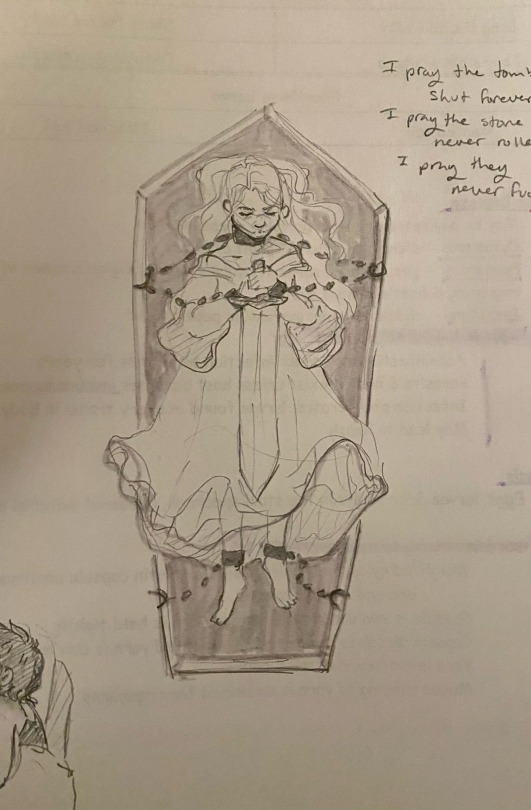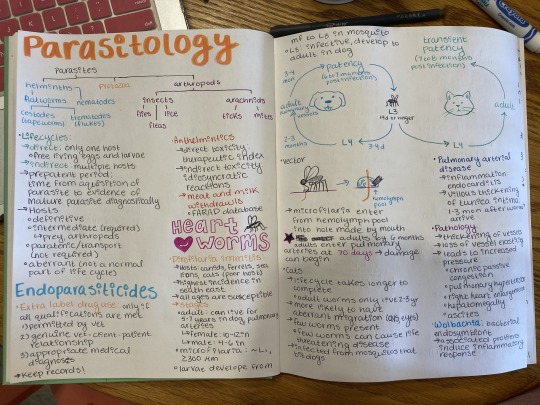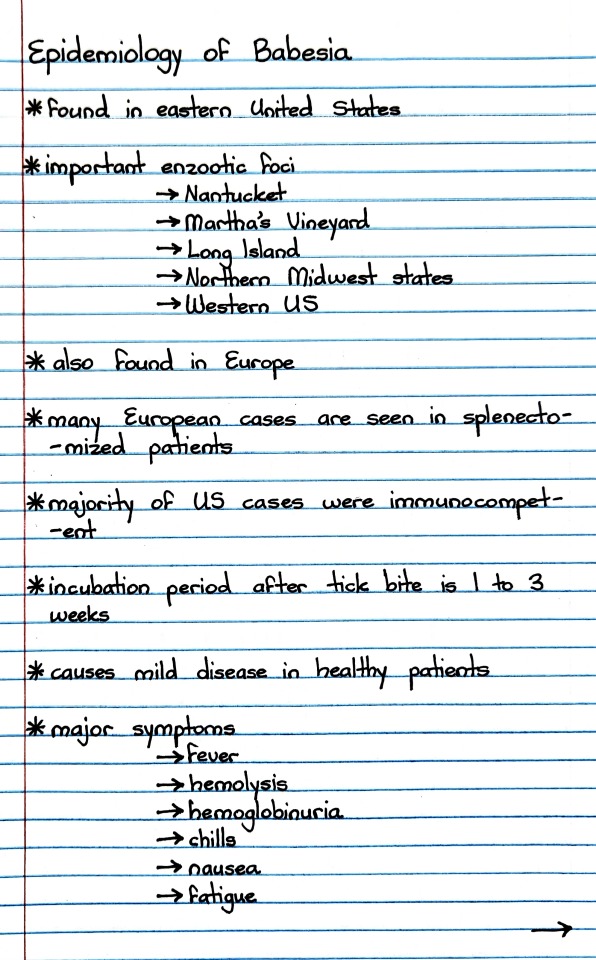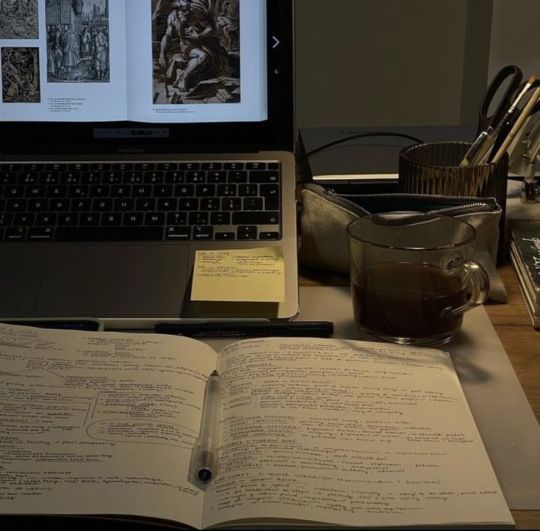#parasitology notes
Text

Patreon
#studyblr#notes#medblr#medical notes#med notes#parasites#parasitology#human parasitology#microbiology#microbio#microbio notes#microbiology notes#parasite notes#parasitology notes#biology#bio#biology notes#bio notes#life science#science#health science#medical science#pathology#pathophysiology#zoology#vetsci#veterinary science#amoebae#sciblr
9 notes
·
View notes
Text

Blood Cell Parasites
7 notes
·
View notes
Text





Various tlt ladies. Bbgs u are an affront to nature and god
#oh ianthe…..#tlt#the locked tomb#ianthe tridentarius#the body#harrowhark nonagesimus#i dont Love the harrows here they r a little too h*mestuck but i cant let the post just be Ianthe. +1 body#fhe body is my fave tho. and shes trapped in my parasitology notes#all these r trapped in my notes#doodles
4 notes
·
View notes
Text






I’ve been converted to a parasite nerd
7 notes
·
View notes
Text
I LOVE HOW LITERALLY NO ONE IN MY UNI USED THEIR WEEK-LONG HALLOWEEN BREAK TO STUDY FOR THE UPCOMING FINALS (which is tomorrow) LIKE YESSSS GIRLIES LET'S FAIL THIS SHIET TOGETHER
#we all collectively started studying just this morning#like i was so scared i was gonna be the only one to come totally unprepared 😭😭#bUT THEN our class gc started ringing#'POTANGINA SINO JAN MAY PARASITOLOGY NOTES.' 'HUH?? WALA KA PANG NOTES??' 'SIYEMPRE WALA NGAYON PLNG AKO MAGSUSTUDY' 'GAGO KA BA' 'OO'#'ANO NGA ULIT COVERAGE NG PATHO EXAM NATIN' 'NGINA LAST WEEK PA KAYA YUN NI-RELEASE' 'EH HINDI AKO NAKIKINIG NGAYON PALANG AKO MAGSUSTUDY'#sarap sa feeling na hindi lang pala ikaw yung tamad#even the other classes owned up to not doing shit during the entire break 😭😭#🍦. ∾filo moment#🍞. ∾gie talks
0 notes
Text
babygirl i know about so many worms
0 notes
Text


The archeocete Perucetus colossus dives through a coastal bloom of jellyfish in the Pisco Basin (southern Peru), some time during the Eocene (with bonus multiview).
I originally intended to add epibionts to this reconstruction (reflecting the specialized communities found on many living whales, especially baleen whales). Yet, interestingly, it appears that most animal epibionts and ectoparasites of modern cetaceans, such as whale barnacles (Hayashi et al. 2013) and remoras (Friedman et al. 2013), only appeared in the Neogene or late Paleogene, or have a poorly known (co-)evolutionary history, like whale lice (Pfeiffer 2009, Iwasa-Arai & Serejo 2018) and pennellids (large parasitic copepods) (Hermosilla et al. 2015). So, no epibionts* for big lad Perucetus!
References and notes about the reconstruction:
*animal epibionts. Unicellular eukaryotes like diatoms were most likely present on early cetaceans, given their prevalence on modern large marine animals (Ashworth et al. 2022). Of course, it is possible that other animals (i.e., early, less specialized representatives of modern groups, or different taxa altogether) were also already exploiting the surfaces offered by these early whales; however, this remains entirely speculative.
The reconstruction of Perucetus proposed in its original description (Bianucci et al. 2023) includes some rather odd (if interesting) choices about soft tissues, including limbs with webbed and distinguishable fingers, and a manatee-like tail. While these choices might be defendable in light of the rather basal status of Perucetus among cetaceans, I opted for a more derived look based on the assumption that fully marine cetaceans like basilosaurids would have probably rapidly acquired hydrodynamically favorable adaptations, pushing them towards a more familiar Neoceti-like appearance (even though Perucetus itself was likely a poor swimmer (Bianucci et al. 2023), it seems likely to me that this was a secondarily acquired trait, given the less extreme morphology of other basilosaurids).
Reconstruction in the multiview scaled to ~18 m in length after the estimations of Bianucci et al. (2023).
References:
Ashworth, M. P., Majewska, R., Frankovich, T. A., Sullivan, M., Bosak, S., Filek, K., Van de Vijver, B., Arendt, M., Schwenter, J., Nel, R., Robinson, N. J., Gary, M. P., Theriot, E. C., Stacy, N. I., Lam, D. W., Perrault, J. R., Manire, C. A., & Manning, S. R. (2022). Cultivating epizoic diatoms provides insights into the evolution and ecology of both epibionts and hosts. Scientific Reports, 12(1), Article 1. https://doi.org/10.1038/s41598-022-19064-0
Bianucci, G., Lambert, O., Urbina, M., Merella, M., Collareta, A., Bennion, R., Salas-Gismondi, R., Benites-Palomino, A., Post, K., de Muizon, C., Bosio, G., Di Celma, C., Malinverno, E., Pierantoni, P. P., Villa, I. M., & Amson, E. (2023). A heavyweight early whale pushes the boundaries of vertebrate morphology. Nature, 620(7975), Article 7975. https://doi.org/10.1038/s41586-023-06381-1
Friedman, M., Johanson, Z., Harrington, R. C., Near, T. J., & Graham, M. R. (2013). An early fossil remora (Echeneoidea) reveals the evolutionary assembly of the adhesion disc. Proceedings of the Royal Society B: Biological Sciences, 280(1766), 20131200. https://doi.org/10.1098/rspb.2013.1200
Hayashi, R., Chan, B. K. K., Simon-Blecher, N., Watanabe, H., Guy-Haim, T., Yonezawa, T., Levy, Y., Shuto, T., & Achituv, Y. (2013). Phylogenetic position and evolutionary history of the turtle and whale barnacles (Cirripedia: Balanomorpha: Coronuloidea). Molecular Phylogenetics and Evolution, 67(1), 9–14. https://doi.org/10.1016/j.ympev.2012.12.018
Hermosilla, C., Silva, L. M. R., Prieto, R., Kleinertz, S., Taubert, A., & Silva, M. A. (2015). Endo- and ectoparasites of large whales (Cetartiodactyla: Balaenopteridae, Physeteridae): Overcoming difficulties in obtaining appropriate samples by non- and minimally-invasive methods. International Journal for Parasitology: Parasites and Wildlife, 4(3), 414–420. https://doi.org/10.1016/j.ijppaw.2015.11.002
Pfeiffer, C. J. (2009). Whale Lice. In W. F. Perrin, B. Würsig, & J. G. M. Thewissen (Eds.), Encyclopedia of Marine Mammals (Second Edition) (pp. 1220–1223). Academic Press. https://doi.org/10.1016/B978-0-12-373553-9.00279-0
#'a heavyweight early whale pushes the boundaries of...' blablabla you've all read it by now#i have nothing to add#it's fat#look at it#that is all#perucetus#cetacean#mammal#vertebrate#eocene#cenozoic#paleontology#palaeoblr#paleoart#my art
399 notes
·
View notes
Note
Hey! My mom and I both love your writing and my mom found out she can ask questions on here so I am here to relay her most pressing question. She was wondering if “the Parasite books have anything to do with neurodivergence?” She noted the character experiences sensory overload.
Only in the sense that I am neurodivergent, and I don't think I've ever written a neurotypical character. I don't want to say that Sal or any of the other, ahem, "special" people in Parasitology are meant to represent aspects of neurodivergence: they're not exactly human, and as such, they're not divergent from what they're meant to be.
287 notes
·
View notes
Text


📑 08.01.2024 // First day of my second semester! I'm very excited to begin this semester which started with two lectures of parasitology and two of digestive semiology! It was really cool! I took some time to review a bit my parasitology notes on the malaria in the afternoon even if I'm really tired 😴
Also, it snowed today (you can see it a little in the picture ahah)! I love love love watching snow so it made me really happy :))
#dailylar#studyblr#french student#french studyblr#study#pharmacyblr#studyblr community#pharmacy student#pharma student
107 notes
·
View notes
Note
Hi! I was scrolling through your posts just now and saw your note about liking parasitology - i do, too! It was always one of my favourite parts of studying biology. What would you say if your 'favourite' parasite then? (i must admit I am impossibly fascinated by every aspect of Ascaris lumbricoides' whole deal - the lifecycle, how widespread it is, how resistant the eggs are... Also, they're just so beautiful inside, a cross-section of make makes for a very appealing image? Almost perfect of a being!)
I completely agree that going down the roundworm rabbit hole is shockingly fascinating. I literally love reading about historic research about ascaris in humans because so many early scientists ate worm eggs just to be like “see now there are these worms in my poop how crazy is that” lol. I got to present research on equine roundworms at a conference a few years ago and while they’re not as flashy as some other roundworms they’re still absolutely remarkable in the efficiency of their lifecycle. I got in trouble when I was working as an equine vet tech because I kept gushing to owners about how cool various horse parasites are, and obviously most horse owners do not agree with that stance.
It’s so hard to pick just one parasite as a favorite! I love all pentastomids, the tiny-but-mighty screwworm fascinates me, and and I find myself thinking about toxoplasmosis gondii all the time. I went as a lone star tick for Halloween year before last and I’m fond of the Guinea worm too for the historical relevance. Someday I will do superlatives for all my faves and hand out titles for most interesting, scariest, funniest, most nostalgic, etc. There will probably be a LOT of honorable mentions
37 notes
·
View notes
Text
Epidemiology of Babesia


Patreon
#studyblr#notes#medblr#medical notes#med notes#parasites#parasitology#human parasitology#microbiology#microbio#microbio notes#microbiology notes#parasite notes#parasitology notes#biology#bio#biology notes#bio notes#life science#science#health science#medical science#pathology#pathophysiology#zoology#vetsci#veterinary science#amoebae#sciblr
7 notes
·
View notes
Text

Cestodes aka Tapeworms
3 notes
·
View notes
Text
an anatomy of pining is a 60k+ (fully revised and updated weekly) Mikannie fic that subverts the hanahaki trope with deep research into parasitology, complemented by the illustrated field notes of Dr. Zoe Hanji, PhD.
Mikasa Ackerman/Annie Leonhart, Levi Ackerman/Erwin Smith
Hanahaki Disease / Trope Subversion / Smoking / Needles / Choking / Autopsies / Parasites / Phantom Limb Syndrome
rating: explicit

Dr. Ackerman stepped carefully into the alley, letting the door slam behind her to lean where Annie had. In her thick white lab coat, arms crossed over her chest, the doctor stared down at Annie, miffed. Important to note here was the doctor’s unimpeachable beauty: form muscular, face angular and cutting, with glossy, ink black hair in striking contrast to her pale skin, eyes like black ice, hazardous to slip into, unavoidable and all-consuming. Gorgeous in every single way, with a stilted, off-putting manner of speech that somehow had Annie wanting more. The smart, thin-framed glasses perched on her slim, straight nose, augmented the bookish air of intelligence already radiating off her.
I hope you read an anatomy of pining 💐 please reblog if you can to reach a wider audience (I'd love to get this beyond 100 kudos this week)🙏
14 notes
·
View notes
Text
Day 5 - 15 days of Productivity




Goals for tonight:
Finish researching for toxoplasma essay (1250 words)
Finish weeks 2, 3 ABD study notes
Reply to texts from friends/study groups.
Email parasitology prof for honors year
Wash dishes
Put out dark washing.
It's 5pm rn, and I've already done a pretty good job for today. Accomplished:
Packed everything in my room into boxes.
Sorted out thing to go to op shop.
Wrapped fragile things in bathroom.
Went to shops to buy bags for moving.
Put out light washing.
I feel like I'm the type of person to fully exert myself one day and then get exhausted the next day! When I get a bout of inspiration I just can't stop tbh, and then once I'm tired, I can't get up. Wish I was the type of person who could have routine - I rlly thrive in stressful situations. When everything is calm, I just can't function lmao.
Day 4 was one of those days - I was able to spend most of the night packing for my room though and got quite a bit done.
Tomorrow, I think I need to assess the time I have realistically to study for my animal disease biotechnology exam, to figure out how the best to spend my time.
#productivity#study#studyblr#university#essay#productivity challenge#productivity aesthetic#aesthetic#acadamia#darkacadamia#books#reading#studying#stu dying#reading notes#highlighting#studytips#study motivation#studychallenge#chaotic study#chaoticstudy#exam study#study strategies#study tips#studyspo#study blog#exam studying
17 notes
·
View notes
Text




Third semester, week 6
-> Went to bed at my desired time: 5/7
-> Was able to do something to get my body moving: 6/7
-> Was able to engage in my desired spiritual practices: 6/7
-> Something that made me happy this week: walked in on some classmates that were talking about me, turns out they were saying I was the only truly good person in our class jendkdndmd
-> Something productive that I’m proud of: made it in the psychiatry academic league!
Parasitology exam was this week and we had to submit our notes with drawings of each parasite we studies so far… never has a week been filled with so many little critters in my life
9 notes
·
View notes
Text

the mad scientist. the curious. the securer.
name: dr. draco cassini.
age: looks to be in his early thirties. he's 65 years old in human years.
height: 5'10
species: ???
occupation: underground scientist
notes: draco has several degrees in biology, with its centering focus on entomology, ecology, animal husbandry, and developmental biology. he's been alive long enough to even minor in parasitology.
draco cassini, a scientist whose curious and rampant mind. he's a recluse, who hardly ever leaves his home laboratory. his home, so plain, but a single panel shows the elevator that takes them miles below to the laboratory he created. speciments within glass confinement. beakers with questionable liquid and splices of creatures he's created. many things aren't in harmony but he takes care of his creation as though they were the child he birthed.
a mysterious man, one who can poison, heal or create, but hardly does he leave his home, or his laboratory to do any mundane tasks. no, many like him with a mind so expansive and ever moving should need to worry about thirst and food when there are things to create, to destroy, to figure out like an impossible puzzle.
#( mysterious & eccentric scientist ic. )#( mysterious & eccentric scientist hcs. )#( mysterious & eccentric scientist aes. )#( char bio. )
3 notes
·
View notes